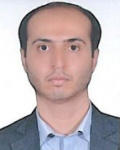| Authors | H Tadrisi Javan, A. Khanlari, A, Motamedi, H. Mokhtari |
|---|---|
| Journal | NEURAL COMPUT APPL |
| Paper Type | Full Paper |
| Published At | 0-0-01 |
| Journal Grade | ISI |
| Journal Type | Typographic |
| Journal Country | Iran, Islamic Republic Of |
| Journal Index | ISI ,SCOPUS |
Abstract
Advertising media selection is the process of analyzing and choosing the most cost-effective media for advertising and promotions campaign. It is generally challenging because of the multiplicity of alternatives, the variations in objectives, and the budgetary limits of organizations. Hence, developing a media selection within the framework of a decision-making procedure is a vital function of advertising. Most of the traditional media selection procedures could be simply placed in two categories: (1) models based on judgment of decision makers who have not enough ability to consider the very large number of media combinations; (2) or quantitative models which could not incorporate imprecise, uncertain and subjective criteria. In this paper, a two-phase methodology is developed for advertising media selection in which by integrating qualitative and quantitative models, humanbased information is incorporated in the decision process, while the complexity associated with the media selection decision is responded. In the first phase, the top media for an advertising campaign is identified by applying analytic hierarchy process based on four criteria of AIDA’s hierarchy of effects model (AIDA stands for: A = Attention, I = Interest, D = Desire, A = Action), and then in the second phase, by integrating a fuzzy linguistic decision model with a genetic algorithm searching process, the optimum media mix of the top media is extracted under satisfying expected advertising objectives and budgetary limitations. In the end, the proposed methodology is implemented empirically in a real-world case with satisfactory results.
